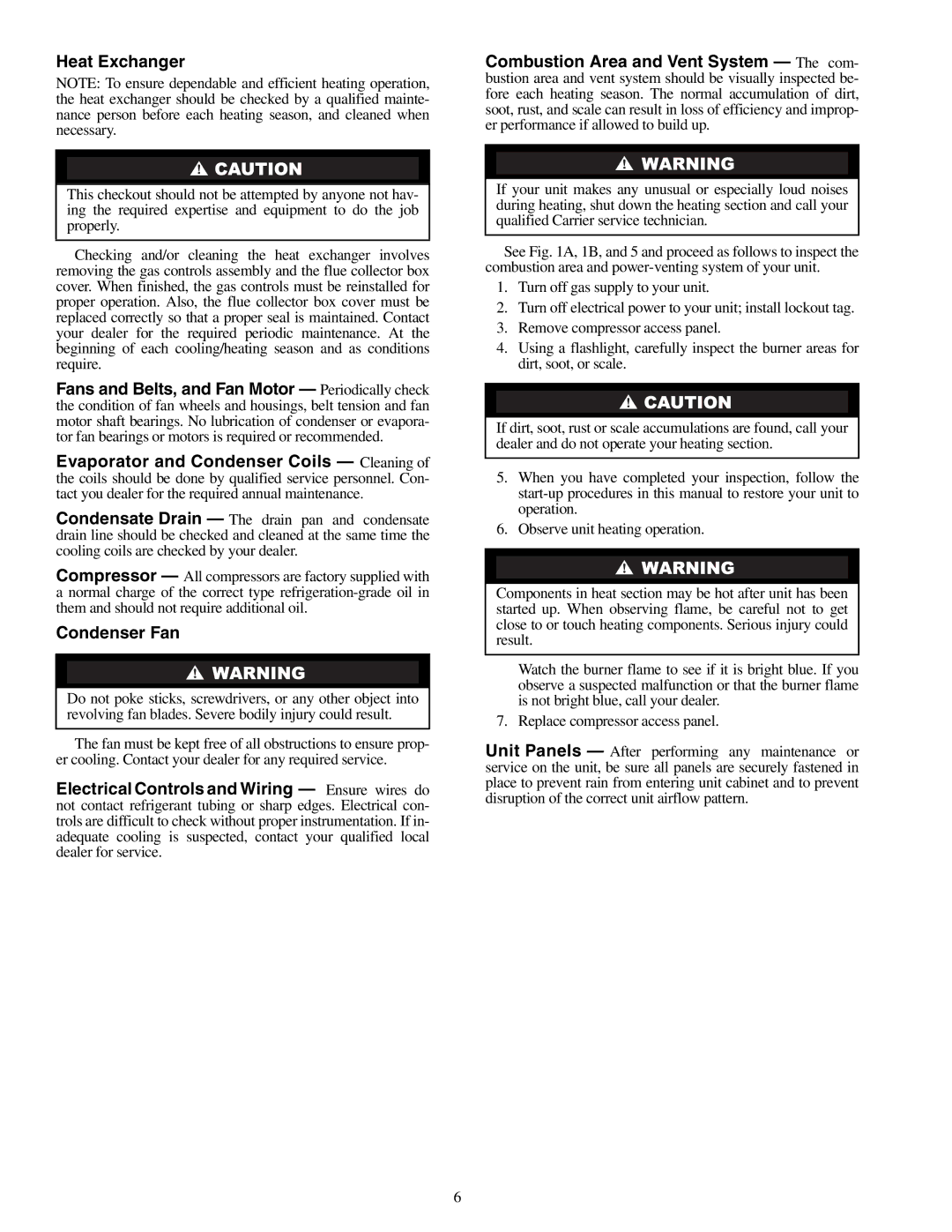48HJ004-014 specifications
The Carrier 48HJ004-014 series is a sophisticated line of rooftop HVAC units that are engineered for energy efficiency and superior temperature control. As part of Carrier's extensive range of commercial heating, ventilation, and air conditioning systems, these units are designed to cater to various applications, making them ideal for office buildings, retail spaces, and other commercial establishments.One of the standout features of the Carrier 48HJ004-014 is its impressive energy efficiency. These units are equipped with advanced scroll compressors that optimize energy consumption while delivering reliable cooling and heating performance. The series boasts high SEER (Seasonal Energy Efficiency Ratio) and EER (Energy Efficiency Ratio) ratings, ensuring that businesses can manage their operational costs effectively.
In addition to energy efficiency, the 48HJ004-014 series incorporates innovative technologies that enhance performance. The units are designed with a multi-speed blower system that allows for precise airflow control, ensuring that indoor spaces maintain consistent and comfortable temperatures. This capability not only improves occupant comfort but also contributes to better energy management.
The Carrier 48HJ004-014 units are built with durability in mind. The robust construction includes a galvanized steel cabinet with a powder-coated finish, providing excellent resistance to corrosion and environmental stressors. This ensures a long lifespan for the equipment and minimizes maintenance needs, allowing businesses to focus more on their core operations.
Moreover, the series is equipped with advanced controls that simplify operation and improve efficiency. The intelligent control systems enable remote monitoring and management capabilities, allowing facility managers to adjust settings based on real-time conditions. This functionality is crucial for optimizing energy use and maintaining indoor air quality.
The Carrier 48HJ004-014 also prioritizes environmental considerations with options for environmentally friendly refrigerants, aligning with sustainability goals. The commitment to reducing carbon footprint while delivering high-performance heating and cooling solutions demonstrates Carrier's dedication to promoting greener technologies.
In summary, the Carrier 48HJ004-014 series stands out for its energy efficiency, innovative technologies, robust construction, and advanced control systems. This makes it a preferred choice for businesses seeking reliable and efficient HVAC solutions that enhance indoor comfort while also contributing to sustainable practices.

